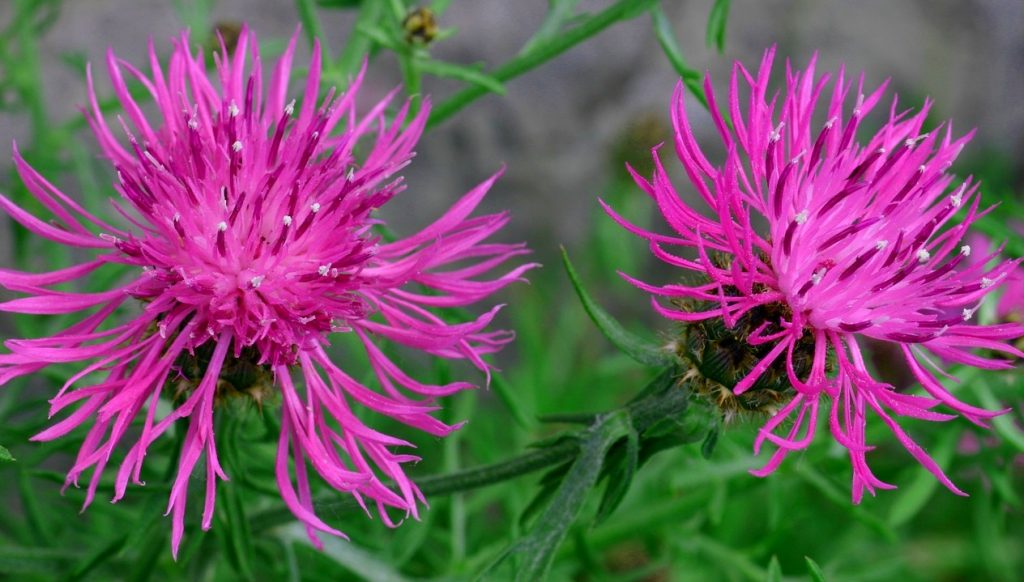Farmers are now using flowers to help reduce pests instead of harmful pesticides
(Collective Evolution| Alanna Ketler) Pesticide use for agriculture is at an all time high. Not only is this disruptive to our health, but it is damaging the soil that we need to grow our food. Once the nutrient levels are depleted from the soil it becomes near impossible to grow a crop without the use of even more pesticides and chemical fertilizers.
Flowers to help reduce pests
Thankfully, as awareness grows, more and more people are switching to organic produce and starting their own gardens. The fact of the matter is, we don’t need to be using all of these heavy-duty chemicals. Alternative forms of agriculture such as a growing trend known as permaculture, are proving that point, and now, some farmers have opted towards using flowers; long strips of bright wildflowers in order to attract the natural predators of pests and cut down the use of pesticide spraying.
How does this work?
The strips of flowers were planted on 15 large arable farms in Central and Easter England last fall, they will be monitored for 5 years. This is part of a trial run by the Centre for Ecology and Hydrology (CEH).
Using wildflower margins to assist and support insects like hoverflies, parasitic wasps, and ground beetles, has been shown to cut down pest numbers in crops and ultimately increase the yields.
Up until now, wildflower strips have only been planted around fields, which has meant that the natural predators were unable to reach the center of very large crop fields. “If you imagine the size of a [ground beetle], it’s a bloody long walk to the middle of a field,” said Professor Richard Pywell, at CEH.
Harvesters guided by GPS technology now have the ability to reap crops in a precise manner, which means that strips of wildflowers that are planted amongst crops can be left untouched and continue to be used all year long. Initial testing done by Pywell show that planting strips of 100 apart means the predators have the ability to attack aphids and other crop-damaging insects throughout the field. The flowers that have been used include oxeye daisy, red clover, wild carrot, and common knapweed.
In the most recent trials, the strips are about six meters wide and take up only 2% of the total field area. The strips will be monitored all the way through a full rotation cycle from winter wheat to oil seed rape to spring barley.
“It’s a real acid test – we scientists are having to come up with real practical solutions,” said Pywell, who also led a ground breaking study which was published last year showing how neonicotinoids insecticides have been damaging bee population and not only individual insects.
We have seen similar trials take place in Switzerland; only they have been using flowers such as cornflowers, coriander, buckwheat, poppy and dill. Pywell hopes that the natural predators can cut down the pests enough from year to year so that there are never any major outbreaks, “That would be ideal – that you never need to spray.”
Last September, a UK government chief scientific advisor warned that the vast majority of regulators around the world simply assume that it is safe to use pesticides at industrial scales across landscapes, and claimed that this was false. A UN report also recently denounced the myth that pesticides are necessary to feed the world, and yes, that means that genetically modified foods, which rely on pesticides to grow are not necessary to feed the world. Thankfully people in a position of power are beginning to realize this.
“There is undoubtedly scope to reduce pesticide use – that is a given,” said Bill Parker, director of research at the Agriculture and Horticulture Development Board. “There will be probably quite a lot of years when pests are not a problem and pesticide use could be vastly reduced. But there will be some years when a particular pest or disease will be extremely important, and those are the times when you really do need the pesticides.”
He also stated that a “huge cultural shift” was needed in agriculture because pesticides are being used whether or not pests have even been identified. “The majority of crop protection advice given in the UK is from agronomists tied to companies who make their money from selling pesticides,” he said. “There is a commercial drive and they will tend to take a prophylactic approach.”
Certainly there is some corporate interest at work here. But luckily with all this new awareness comes change, as people are going back to the basics and realizing that there are safe and effective methods for crops and we do not need to be poisoning our soil, crops and food in the way that we have been.
Much Love
Source: Collective Evolution
You also may like:
Rooftop gardening – the world is finally growing up!
From finance to farmer – incredible permaculture farm created in just 3 years!




